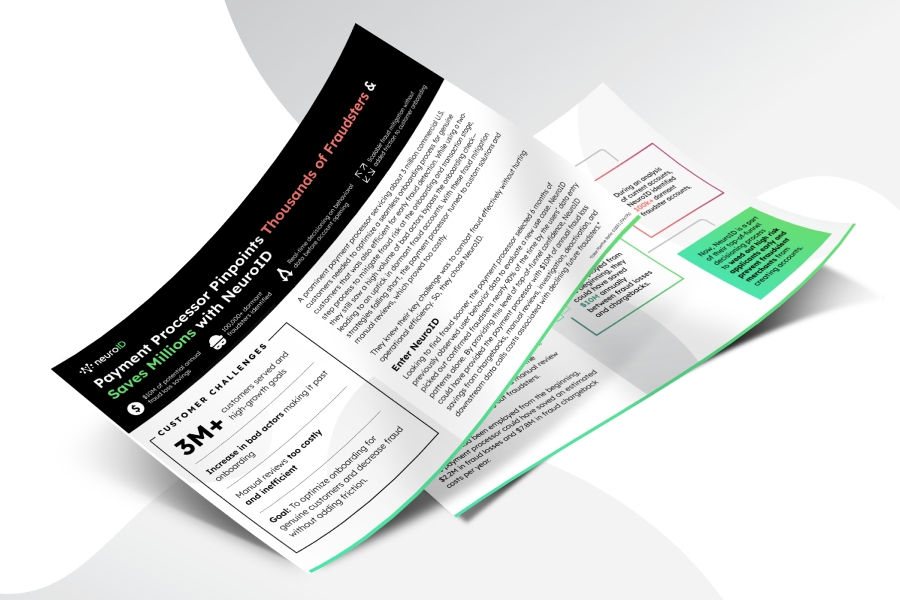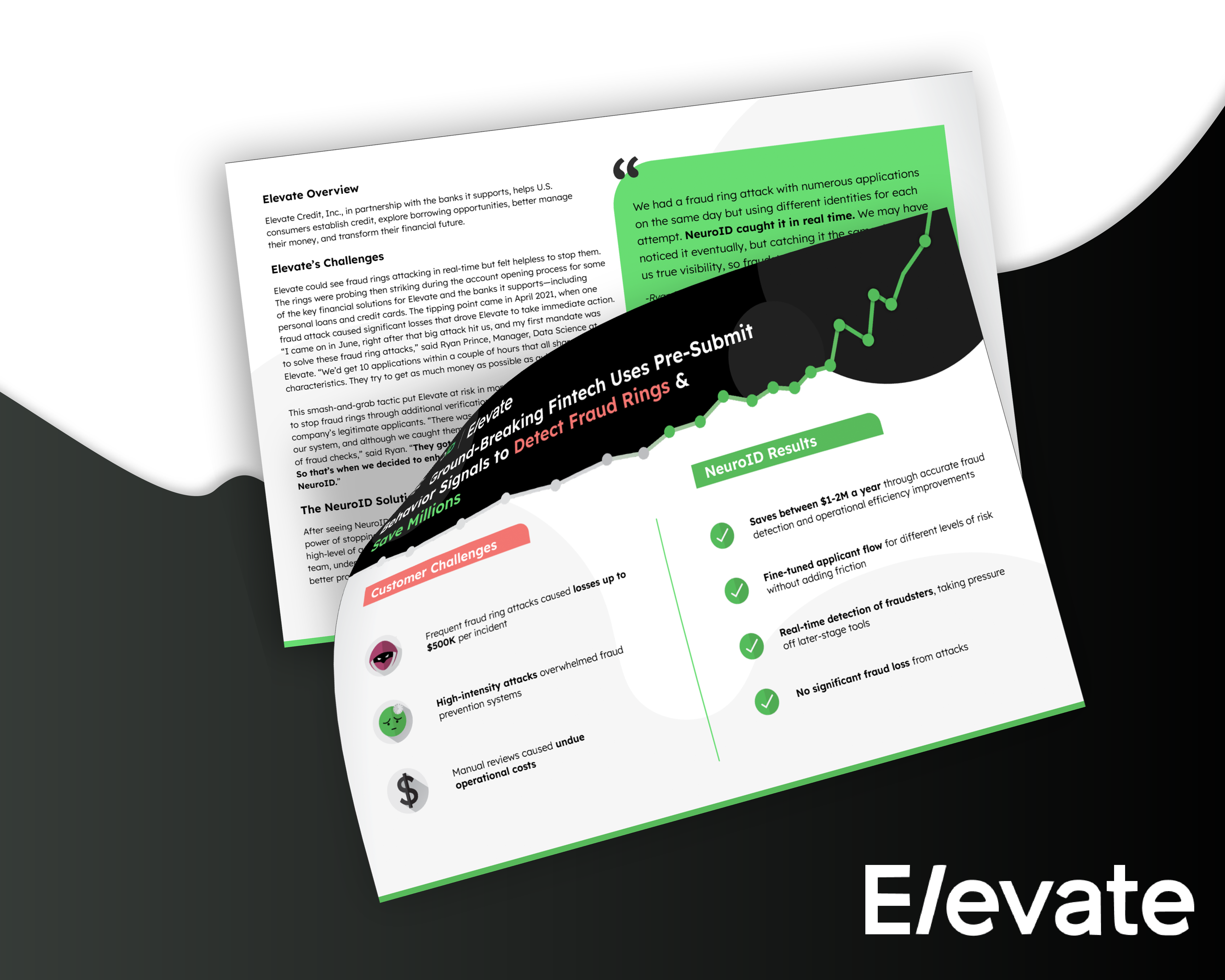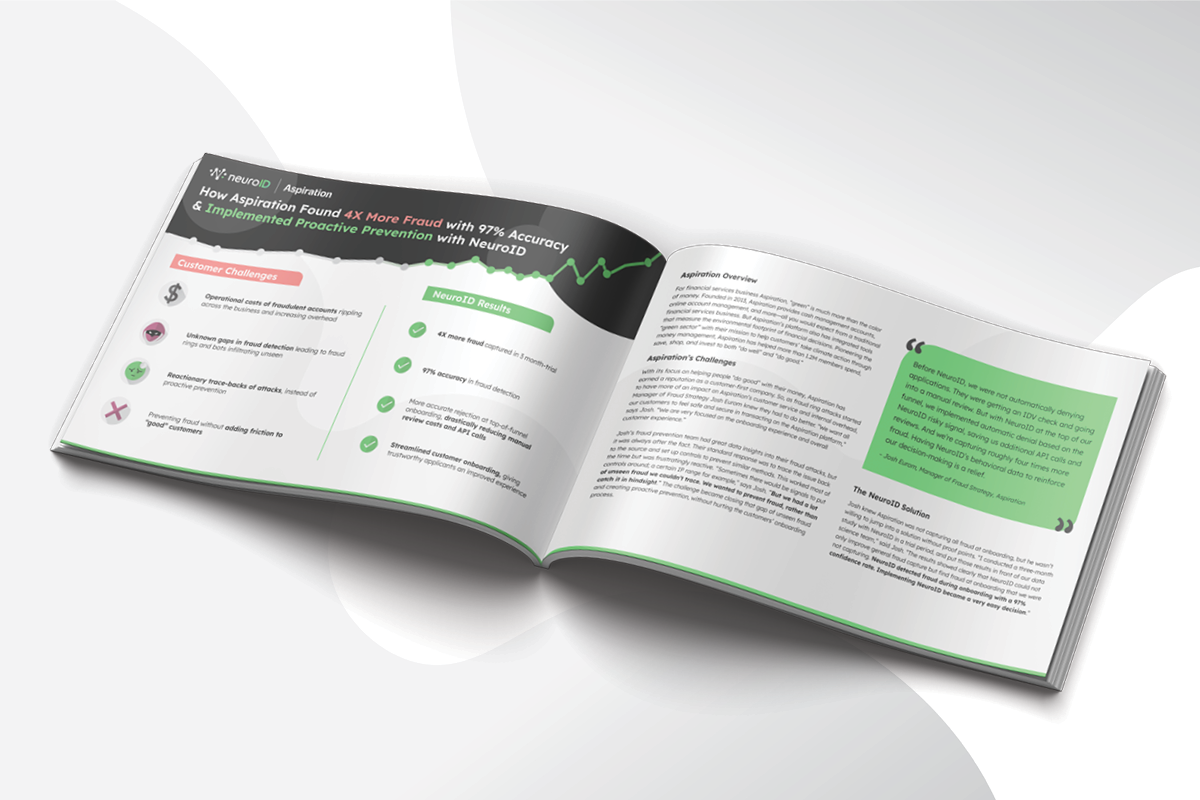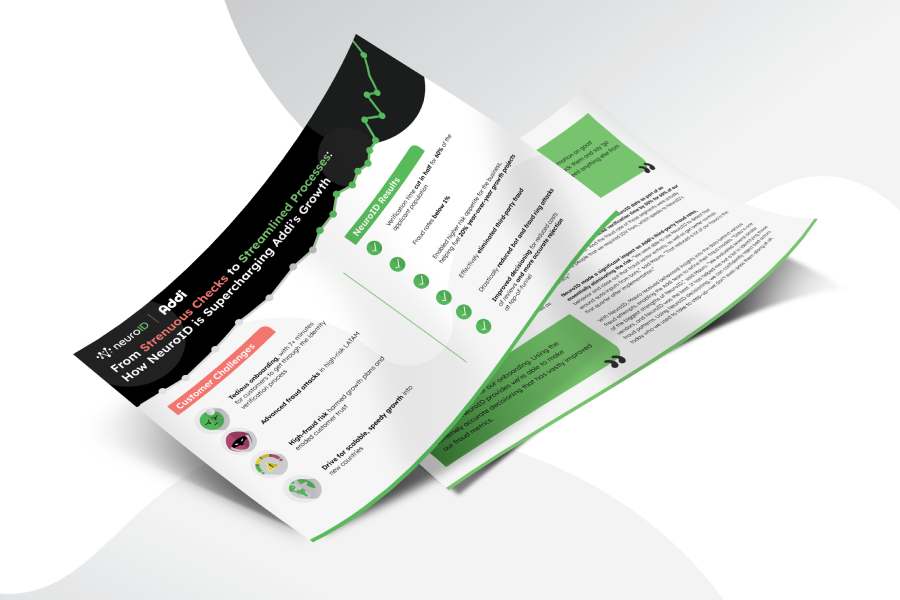
Payment Processor Pinpoints Thousands of Fraudsters & Saves Millions with NeuroID
A prominent payment processor servicing 3 million commercial U.S. customers needed to optimize a seamless onboarding process that was also efficient for early fraud detection.

Challenge
Maintaining Efficiency for Frictionless Onboarding
A prominent payment processor servicing about 3 million commercial U.S. customers needed to optimize a seamless onboarding process for genuine customers that was also efficient for early fraud detection. While using a two step process to mitigate fraud risk at the onboarding and transaction stage, they still saw a high volume of bad actors bypass the onboarding check— leading to an uptick in dormant fraud accounts. With these fraud mitigation strategies falling short, the payment processor turned to custom solutions and manual reviews, which proved too costly.
Solution
Improved Top-of-Funnel Decisioning Through Behavioral Analytics
This payment processor selected 6 months of previously observed user behavior data to evaluate a new use case. NeuroID picked out confirmed fraudsters nearly 90% of the time by the users’ data entry patterns alone. By providing this level of top-of-funnel confidence, NeuroID could have provided the payment processor with $10M of annual fraud loss savings from chargebacks, manual reviews, investigation, deactivation, and downstream data calls costs associated with declining future fraudsters. Further analysis found 100,000+ dormant fraudsters— active accounts tied to hundreds of fraud clusters connected through browser IDs.
Behavior Drives Results
With NeuroID’s behavioral analytics in place, this payment processor captured more fraud while reducing friction during the onboarding process and saved millioned in the process.
100k
Dormant Fraudsters
dormant fraudsters found through matching browser IDs and analyzing all of the users’ who demonstrated high risky behavior.
10M
Cost Savings
in annual savings, based on an analysis of what NeuroID could have prevented in fraud losses and chargeback costs had the solution been implemented in the previous year.
<1
Reduced Pressure
second decisioning on approve, deny, or review, which reduced the pressure on the overall fraud stack.




